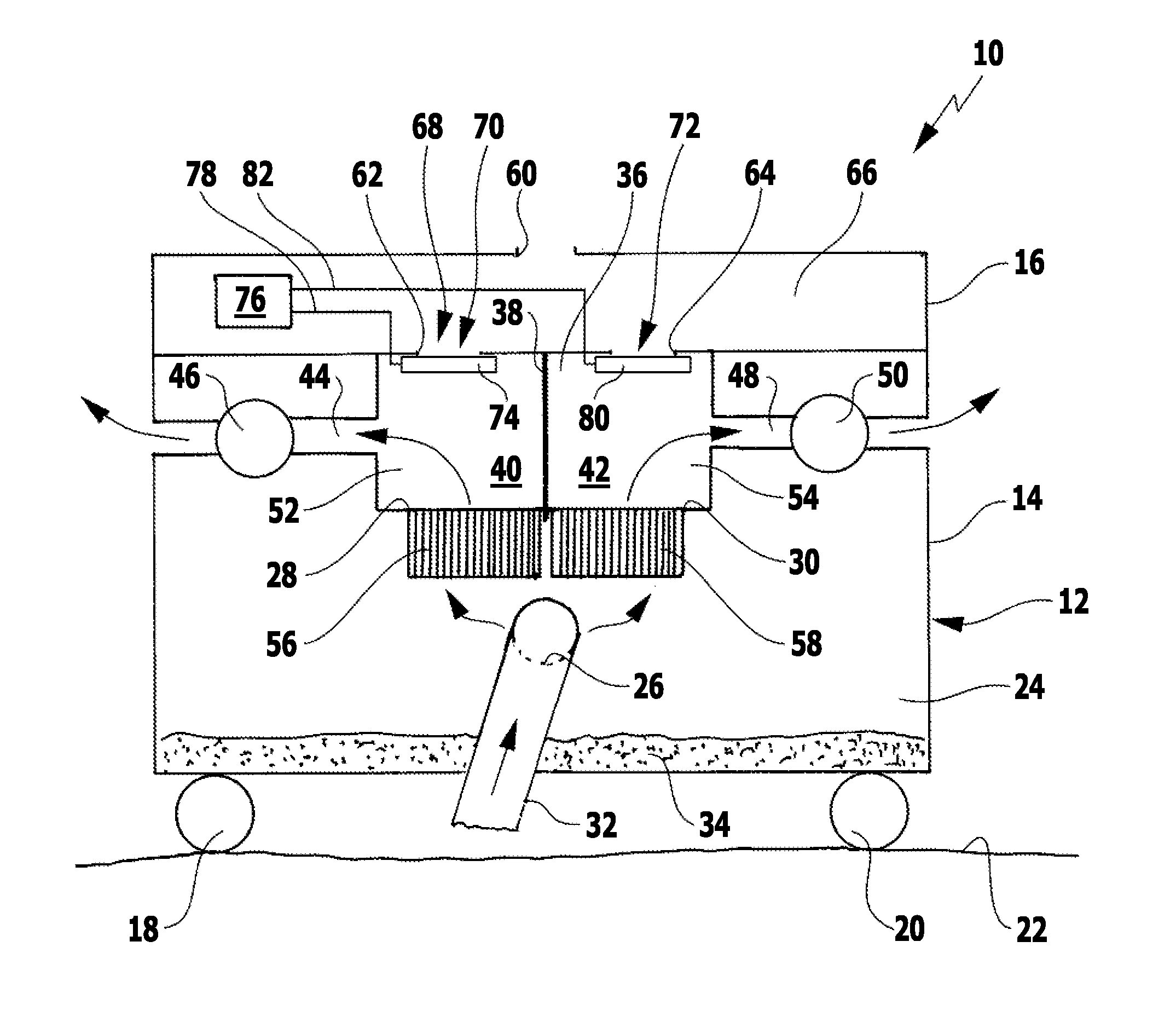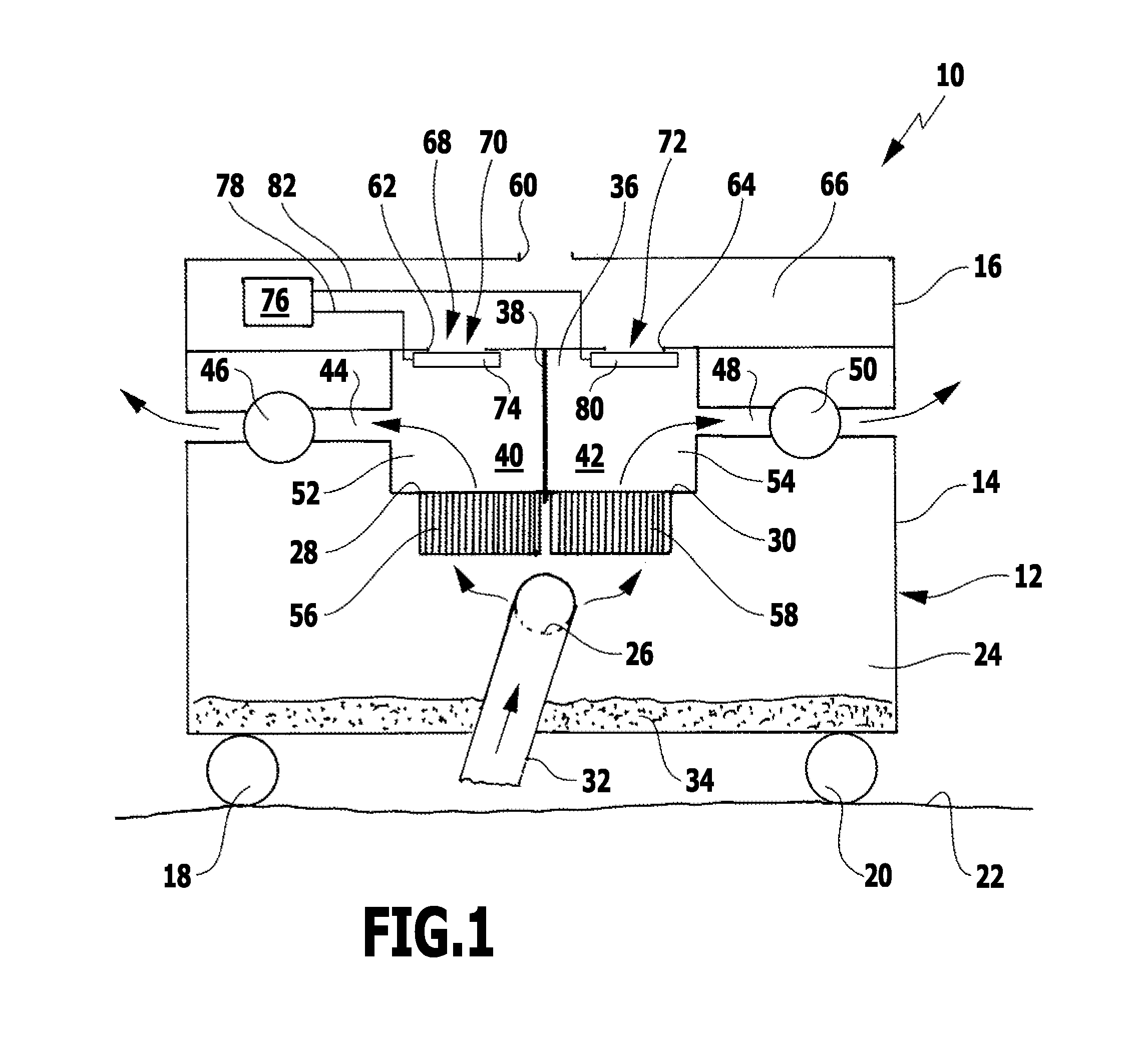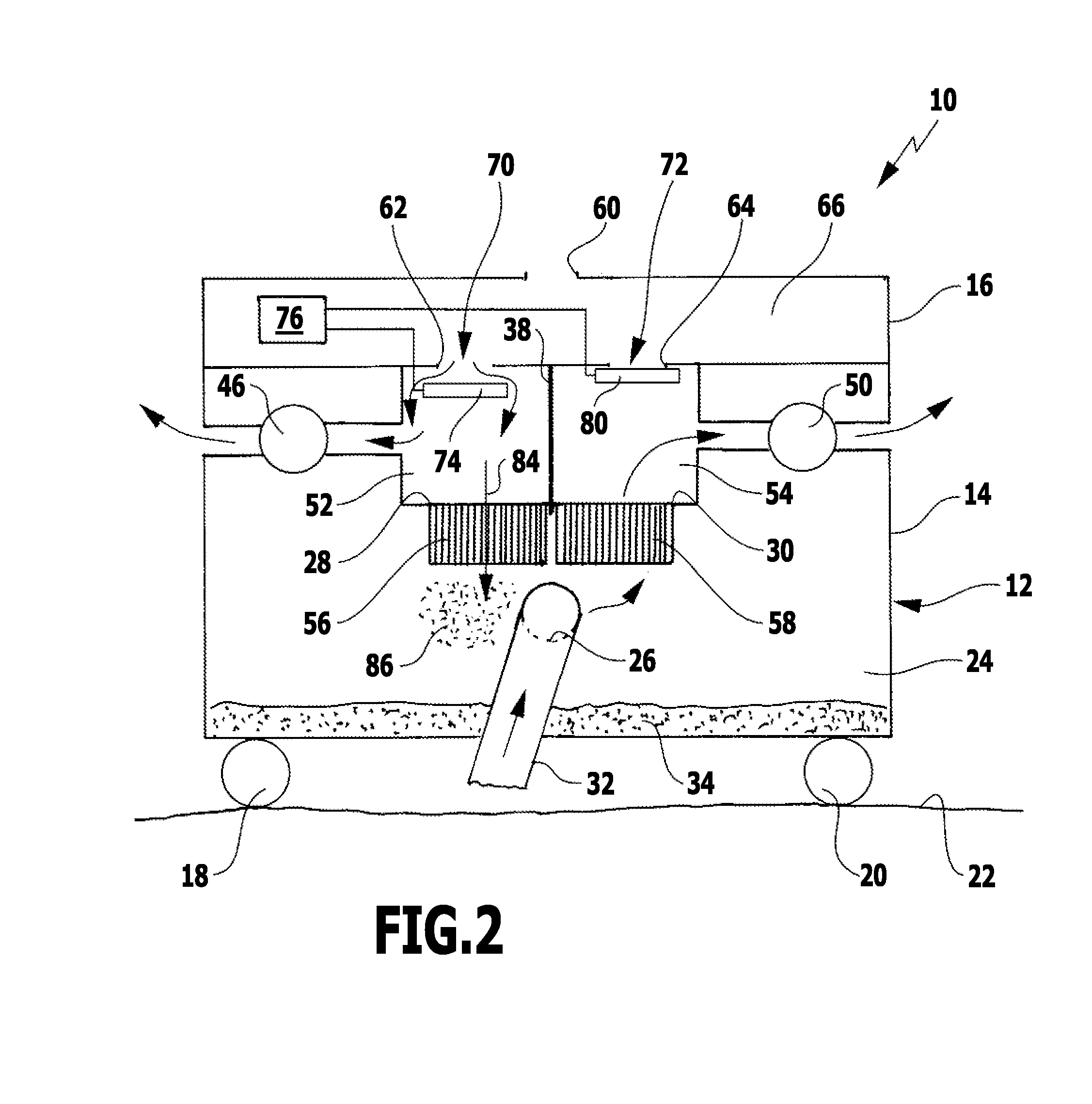Method for cleaning two filters of a suction device for cleaning purposes and suction device for performing the method
a technology of suction device and filter, which is applied in the direction of cleaning filter means, filtration separation, separation processes, etc., can solve the problems of reducing the suction power of the vacuum cleaner, the pressure rise in the dirt collection container, and the disadvantage of both the external air entering the dirt collection container via the open external air inlet and the filter to be cleaned. , to achieve the effect of simple construction simple design of the suction device, and simple design of the su
- Summary
- Abstract
- Description
- Claims
- Application Information
AI Technical Summary
Benefits of technology
Problems solved by technology
Method used
Image
Examples
Embodiment Construction
[0046]A first preferred embodiment of a suction device in accordance with the invention in the form of a vacuum cleaner is represented diagrammatically in FIGS. 1 to 3 and denoted therein by reference numeral 10. The vacuum cleaner 10 comprises a housing 12 with a lower housing part 14 and an upper housing part 16 fitted thereon. Rollers 18 and 20 serving to move the vacuum cleaner 10 on a set-down surface 22 are held on the lower housing part 14.
[0047]The lower housing part 14 is configured as a hollow body and forms a dirt collection container 24 of the vacuum cleaner 10 with a suction inlet 26 and a first suction outlet 28 and a second suction outlet 30, which are each in the form of a through-opening of the lower housing part 14. Detachably connected to the suction inlet 26 is a suction hose 32, to whose free end, facing away from the dirt collection container 24 and not shown in the drawings, there may be connected, in a known manner and, therefore, not explained in greater det...
PUM
| Property | Measurement | Unit |
|---|---|---|
| diameter | aaaaa | aaaaa |
| diameter | aaaaa | aaaaa |
| pressure | aaaaa | aaaaa |
Abstract
Description
Claims
Application Information
 Login to View More
Login to View More - R&D
- Intellectual Property
- Life Sciences
- Materials
- Tech Scout
- Unparalleled Data Quality
- Higher Quality Content
- 60% Fewer Hallucinations
Browse by: Latest US Patents, China's latest patents, Technical Efficacy Thesaurus, Application Domain, Technology Topic, Popular Technical Reports.
© 2025 PatSnap. All rights reserved.Legal|Privacy policy|Modern Slavery Act Transparency Statement|Sitemap|About US| Contact US: help@patsnap.com



